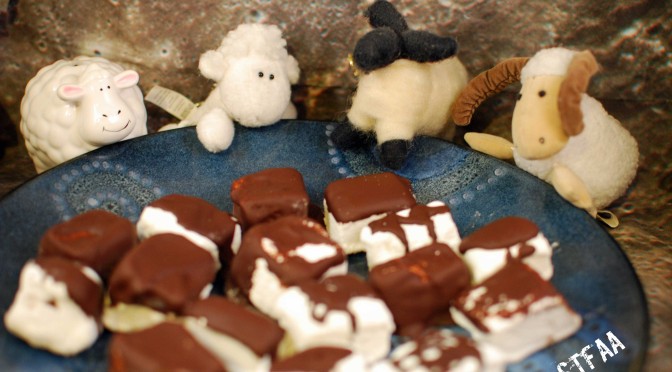
I love Vietnamese food. Seriously, I love it. Before the corn allergy, our local Vietnamese joint could recognize my voice before I even finished stating that I wanted to order takeout. The owner knew my name and my husband’s name, and what we generally ordered. If Shawn forgot what I wanted when stopping in to pick up dinner on his way home from work, the owner could reel off my five or so favorite dishes until Shawn heard the one that jogged his memory. I used to get #23 with Beef, i.e. Steamed Vermicelli Patties or Banh Hoi, that you wrap up in rice paper yourself, probably more than fifty percent of the time. So it was inevitable that I figure out how to make it myself in a way that’s safe for me. However, I didn’t actually do the rice paper and make my own fresh/salad rolls, because it’s winter (yes, I know it’s technically spring, but that’s not what’s outside and it snowed yesterday), I just moved, and I’m really tired. It’s all the good stuff without the rice paper wrapper, that’s all.
Rice Vermicelli Salad Bowls with Beef
Serves 4 or 2 really hungry people with maybe enough for a bit of lunch the next day.
Beef and Marinade:
- 1 and 1/2 pounds of beef sirloin beef tips, sliced across the grain into pieces about 1 1/2 to 2 inches long and 1/4 inch wide
- 1 garlic clove, minced and crushed to a paste (if you don’t have a garlic crusher, just mince it and smoosh it with a metal spoon)
- 1 shallot, finely minced, or 1/4 of a small onion, finely minced
- 1 Tablespoon of brown sugar
- 2 Tablespoons of oil (make sure it’s safe for you, I used grape seed oil)
- 1 Tablespoon of soy sauce (I do well with San-J Tamari Gluten Free Soy Sauce, the alcohol is from cane sugar not corn), but if you can’t use soy, try Mary Kate’s recipe for a Soy-Free, gluten-free “Tamari Sauce”
- 1 Tablespoon of Sriracha (I use my own homemade from this recipe, but I use rice vinegar instead of distilled)
- a bit of oil for frying
Salad Fixings:
- 1 – 8 ounce package of fine rice vermicelli (for reference, this is what I used, no affiliation with Amazon, just ease of linking)
- Scallion Oil Garnish (here’s the recipe, although I used grape seed oil)
- fresh mint or fresh thai basil or both
- Spring Mix lettuce
- tomatoes, sliced
- cucumbers, sliced
- bean sprouts (I didn’t use them, but just because the grocery store didn’t have them today)
Condiments of your Choice:
- Sriracha
- Plum Sauce
- Hoisin sauce – I make my own, but if you don’t have a corn allergy, I think Wok Mei has one, but it does have soy)
- Thai Hot and Sweet Dipping Sauce
- Carrot and Daikon Radish
Slice your beef to the correct thinness and length if you haven’t already.

Place garlic, shallot (or onion), brown sugar, oil, soy sauce and Sriracha in a bowl large enough to place the sirloin tips. Mix the ingredients well so that the sugar dissolves.

Add the beef and stir well. Set the beef aside let it marinate while you work on the rest of the dish.

Fill a large pot with 3 quarts of water and bring to a boil. Once boiling, add your rice vermicelli and let boil for 3 minutes. Drain and place in a bowl to cool.

In a skillet (I used a cast iron wok, because it’s new and I wanted to play with it, but you can use a cast iron skillet or other skillet), heat a bit of oil over medium heat. When the oil is hot, place the beef in the skillet, making sure not to crowd, or have more than one layer.

You may (will) need to do it in batches. When you have a nice sear on one side, flip the beef over and sear the other side. Tongs really help for this. Depending on your skillet and your stove, it’ll take 2-4 minutes a side to sear (this make take some experimentation on your part). You might want to put the beef on a plate as you do batches.

Once you have finished cooking the beef, it’s time to assemble your salad bowl. Place some of the vermicelli in the bowl (you may need to cut it, as the noodles are long). Add the other salad fixings of your choice, and some of the beef. Then add the condiments of your choice and voila!

Almost like the old days!
































